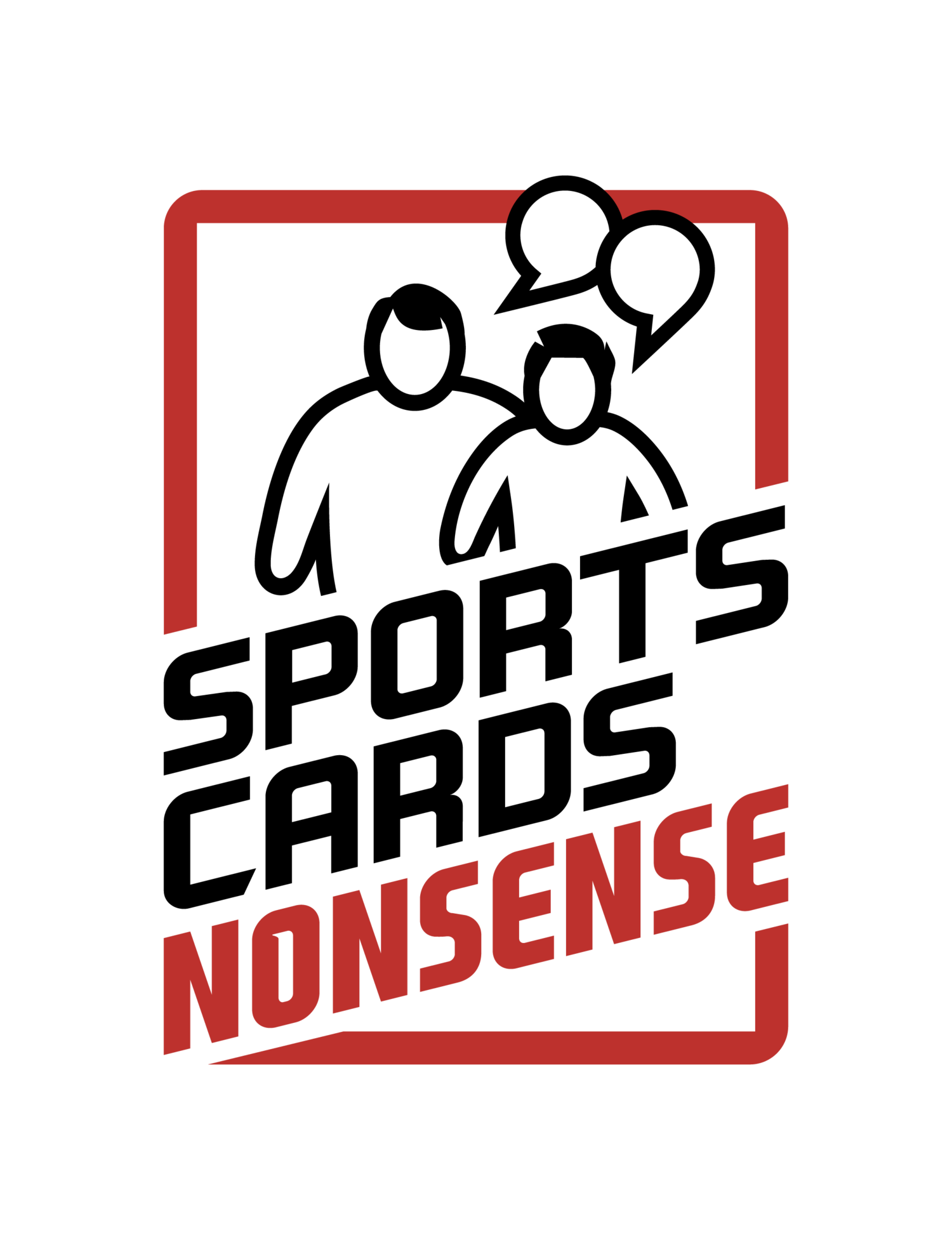Holograms and Die-Cuts are a Missed Part of the Sports Card World
The card world is fertile ground for nostalgia. Me, I miss holograms and die-cuts. These staples of the 90s have become increasingly a thing of the past in the hobby which is a shame. I’d like to see both holograms and die-cuts have a bigger presence in modern releases. The big question is why don’t they. Did they just lose popularity or are there other reasons they are avoided? I’m hoping that they make a comeback soon. Let’s explore their history and see if there are any barriers to their return.
Die-Cuts
While associated with Pacific and the 90s, die-cuts have been part of the hobby from the very beginning. Many of the earliest trade cards that were the progenitors of modern cards used die-cut shapes. My personal favorite are the Heinz trade cards cut like pickles. Die-cuts were popular early but fell out of favor for cards with more standard sizing.
Yes, they pop up throughout the history of the hobby. They were perfected by one company though. Pacific for years was the king of the die-cuts. They had their share of problems, but lack of creativity was never one of them and Pacific showed that most strongly when making die-cut cards. From scenes of Hawaii to portraits made by pinholes, Pacific cut cards up into all manner of shapes most of which are still affordable but just about impossible to find in high grade.
Die-cuts aren’t completely gone from the hobby. Topps includes a few each year in insert sets and die-cuts are an important part of Panini’s Select parallel structure. We might not be getting tons of die-cut cards, but it’s not like they have disappeared completely. They are all largely ignored though. Why have they faded into obscurity?
It has been ages since a die-cut set captured the imagination of collectors. One reason for the lack of popularity is grading. Die-cut cards are notoriously hard to grade. They are also notorious about moving around in graded holders. Another reason I think die-cuts have lost popularity is that the companies aren’t making them a priority. The die-cut designs seem like afterthoughts. It’s a chicken and the egg scenario admittedly. Topps has had some stellar designs recently and it is my fervent hope their talented designers give the die-cut its due. Finally, the messy end of Pacific and their close association with the more outlandish die-cuts might have companies reluctant to start chopping cards up again.
A King for the Holograms
Die-cuts are still around even if they are ignored. Holograms are incredibly hard to find in modern releases. Holograms peaked in the early 1990s with full-card holograms that were “the” chase cards and then became increasingly rare ultimately disappearing for years at a time. They even shrunk on the cards going from full-card holograms to tiny one-inch square ones that were but a fraction of the card.
Where Pacific perfected the die-cut, Upper Deck was the undisputed king of the hologram. In fact, I’d argue it was the hologram that drove Upper Deck’s initial popularity in the hobby. Upper Deck loved holograms enough to offer several products where every single card featured the hologram technology. The gimmick was popular and I remember SPX being one of the fastest sellers at the card store I worked at in the 90s. It was expensive though and the excitement wore off. By 1998, Upper Deck ceased making hologram sets and no one has jumped in to fill the gap in the market.
Holograms are the definition of cards that look better in hand. I’m convinced part of the lack of popularity for them comes from the fact they are just about impossible to take good pictures of. The other major hindrance is that they were all printed in astronomical quantities keeping prices low. Topps and Panini see the low prices and assume collectors don’t want holograms. This collector sure does though.
Ultimately, the narrative is that holograms fell victim to cheaper technology (chiefly the refractor) that collectors also seemed to prefer. I don’t fully buy this story. The refractor took off for sure, but it’s not like Upper Deck dropped holograms for refractors. Really, Upper Deck swapped to game-used and autos as the expensive gimmicks to offer consumers. I think there is still plenty of room for holograms in the modern card world and given the response they get when someone posts a hologram online that others do too.
Wrap Up
I’m optimistic that die-cuts can make a comeback with inspiration from the right card designer. Holograms will be a tougher ask, but I’m hopeful that 90’s nostalgia will prove a strong enough force to get them made.

